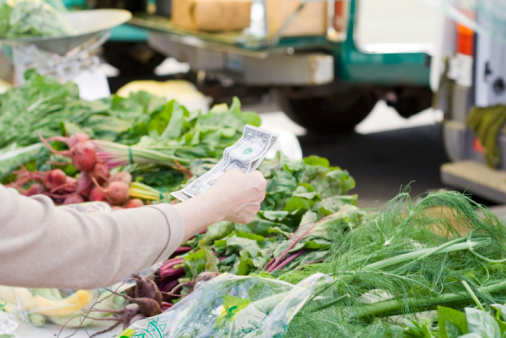 In my pediatric nutrition practice, I often preach about getting more fruits and vegetables into the diets of the children I see at the Nutrition Clinic of Einstein’s Children’s Evaluation and Rehabilitation Center. Eating more vegetables is a proven way to fight obesity and promote better health.
In my pediatric nutrition practice, I often preach about getting more fruits and vegetables into the diets of the children I see at the Nutrition Clinic of Einstein’s Children’s Evaluation and Rehabilitation Center. Eating more vegetables is a proven way to fight obesity and promote better health.
Sometimes the question of where and how to find healthy food comes up during my conversations with parents. Many of my clients reside in the Bronx, where sometimes the closest vegetable is the pickle on a greasy hamburger or some deep-fried potatoes.
A recent experience I had at a local farmers’ market really got me thinking about how difficult it is for some of my patients to practice what I’m preaching.
On a recent Friday when I happened to have a day off, I finally had time to stop into a relatively new farmers’ market in my suburban town. I love farmers’ markets, but the operating hours of this particular market were never in sync with my schedule.
Now I had my chance to pick up some fresh veggies to cook for a weekend dinner and to choose local summer fruit for breakfast. I was excited. Eating seasonal foods and supporting small family farms come naturally to me, as my family had a small business when I was growing up. So supporting small farmers always seems right. Besides, eating locally grown food is all the rage. What’s not to like?
I picked up two pint-sized baskets of strawberries, along with three ripe tomatoes and four ears of corn. I’d purposely avoided buying corn at the local greengrocer because I’d heard that local farmers were selling it here.
As the cashier tallied my purchases, I strained to take in the final tab. “That’ll be $15.50,” she said cheerfully. I was floored. I knew there might be some difference in price between this and what my neighborhood supermarket charged, but I never expected that much of a difference. How much of a difference? On the way home, I did a price check at the local supermarket and the same items came to only $6.50. Much less than half the price.
My shopping trip highlights the dilemma eating locally can sometimes pose. It’s better for the planet and it’s supposed to give us food that’s fresher and tastes better (though not always; the corn I bought had seen better days), but if it’s more than twice as expensive as the stuff that comes from farther away, how can people—especially those on a low or fixed income—afford to support local farmers?
Now, I do realize that this was just one farmers’ market in one suburban town—hardly a representative sample—but when you consider that one in three poor people lives in a suburban area, farmers’ markets might be out of reach for those outside resource-challenged urban areas as well.
The reality of my experience creates a challenge for me professionally. After all, I can’t ethically tell my patients to patronize these farmers’ markets when I know it would squeeze the last breath from their already tight food budgets. Some farmers’ markets do accept Supplemental Nutrition Assistance Program (SNAP) funds. That’s great, but people will still get nutritional value for their SNAP budget at the local grocers’ and their benefits will go a lot farther.
On the other hand, it is important to connect with the people who actually grow and pick your food. Doing so reminds us all that food doesn’t grow in a store; it grows in the ground and it’s planted by people who actually care about what they produce. For that reason, I’ll support patients who want to go to a farmers’ market; I’ll just ask them to choose wisely.
Consumers can also look into whether there is a Community-Supported Agriculture program in their area that might provide an even more direct link from farm to table—and at a cost savings. In a CSA, shoppers get access to locally grown food through the purchase of a share of produce from a farmer. It’s a great way to support farmers and your health, though there is an up-front cost to consider. Einstein has a CSA of its own. It usually requires a payment up front for the season, however, which might be a sticking point for people with low or fixed incomes, and may also involve going to a central location to pick up produce, so it might not be appropriate for those without cars.
For myself, I’ll still go to farmers’ markets and I may even return to the one in my town, but my “gold strawberries” experience has given me a fresh perspective on the local supermarket. I’ll be spending plenty of time there. And I’ll be suggesting that my patients do the same. That way they can afford to eat more fruits and vegetables, which is the main goal in the first place.


Comments on this entry are closed.
Farmers markets in Austin, TX, are aware of the price differential you mention. At least five of which I am aware cope by exchanging SNAP benefits for a higher dollar amount of market tokens. The CSAs trade labor for produce. If you are in an urban environment and the fields are inconveniently far away, the labor can be (un)loading, setup, and takedown at the farmers market itself.